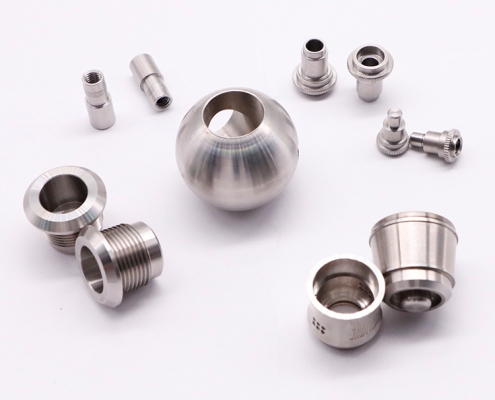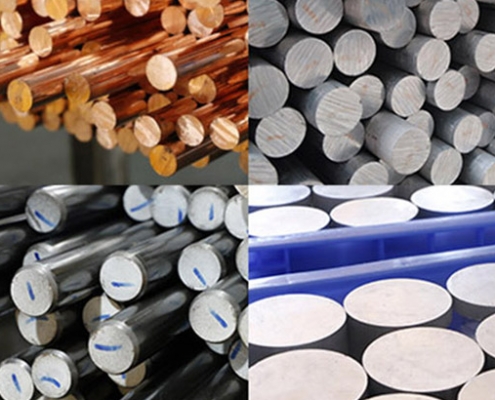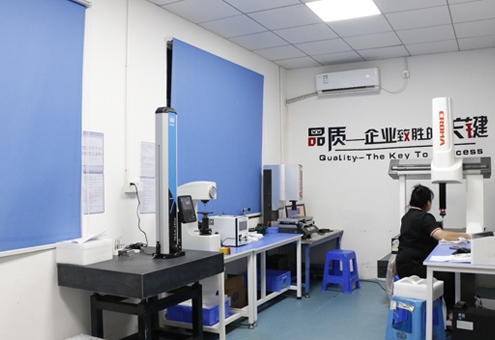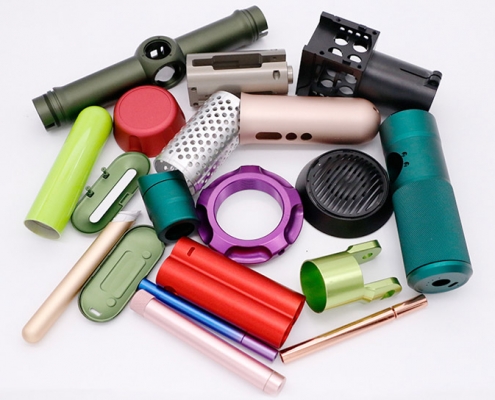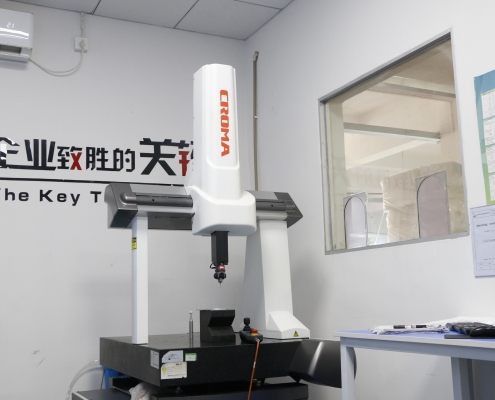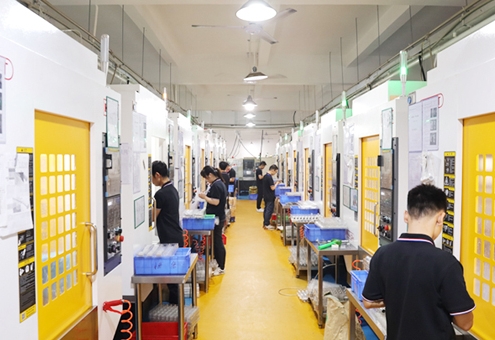How Do I Produce Good Quality CNC Machined Parts?
Producing high-quality CNC machined parts can be challenging. Issues like inconsistent precision, defects, and errors can compromise production. The solution lies in optimizing your CNC machine design, accurate tooling, proper material selection, and efficient quality control processes.
To produce high-quality CNC machined parts, focus on CNC machine design, accurate calibration, choosing the right materials, and implementing a robust quality control system. These factors ensure precision and consistency in production.
Now, let’s dive deeper into the key factors and methods that can significantly enhance the quality of your CNC machined parts.
What Are the Key Factors in Producing High-Quality CNC Machined Parts?
Producing high-quality CNC machining parts depends on several critical factors, including machine condition, tooling, material selection, and design. These elements work together to ensure precision, durability, and overall product quality, particularly for industries demanding exacting standards.
1. Machine Condition
The condition of CNC machines plays a vital role in achieving quality CNC machining. Well-maintained machines ensure high precision and repeatability, minimizing errors in the production process. Leading manufacturers, such as China CNC machining parts with good quality suppliers, prioritize regular maintenance and advanced machinery to deliver superior results.
2. Tooling
Tool selection impacts machining speed, dimensional accuracy, and surface finish. High-grade tools are essential for achieving quality CNC results, particularly when working with complex geometries or high-performance materials. Reliable China CNC machining parts with good quality factory providers invest in premium tooling to meet global standards.
3. Material Selection
The choice of material directly influences the machining process and the performance of the final product. Materials should be chosen based on their machinability and their ability to meet the functional requirements of the part. High-quality CNC machining parts are often crafted from metals like aluminum, steel, or titanium, as well as specialized plastics.
4. Design Optimization
A well-structured design significantly contributes to manufacturability and quality. Following a comprehensive CNC machining design guide ensures the product is optimized for production while maintaining quality CNC machining standards. Collaboration with experienced engineers, such as those at China CNC machining parts with good quality suppliers, enhances the final output.
By focusing on these factors, manufacturers can consistently deliver high-quality CNC machining parts that meet or exceed customer expectations. Reliable partners, such as China CNC machining parts with good quality factory, combine advanced technology, skilled craftsmanship, and stringent quality controls to achieve exceptional results.
How Do I Produce Good Quality CNC Machined Parts?
The question “How Do I Produce High-Quality CNC Machined Parts?” generates diverse answers from individuals across various industries, each contributing their unique perspectives and expertise. Here are some insights gleaned from these professionals:
Delia Tam:
Good quality machined parts include many factors. And you need to take every step about this machined parts seriously.
- Check the drawing very carefully to see whether you can meet all the requirements on the drawing.
- Choose the right raw material which is required in drawing. It’s necessary to inspect the chemical composition in house or in the 3rd lab. If the customer requires special Physical parameters, you need to test the mechanical properties. Make sure the raw material can 100% meet customers’ requirement.
- Choose the right machine to process the part.
- Strictly follow what required in the drawing. I mean dimensions and their tolerance, angles, surface finish, surface treatment, etc. Please don’t GUESS and DECIDE anything for the customer without authorization.
- Pay attention to in-progress quality control and quality assurance before shipment. It should be actual inspection as required instead of supplying a so-called dimension report. The attitude of quality management is very important.
All the above points fyi. Hope it’s helpful.
Yucfau Havain:
Producing good quality CNC machined parts requires a thorough understanding of the CNC machine and its proper operation. First, you need to choose the right type of CNC machine for your application, such as vertical milling machines, horizontal milling machines, lathes or routers.
Next, you should ensure that your programming code is accurate and efficient. A well-written program will ensure that the final part has no unnecessary moves or extended cycle times which can affect tool life and accuracy. Additionally, pay attention to feed rates and spindle speeds in order to produce top-notch results from your workpiece.
But actually, the more direct and simple way is to find a professional CNC parts manufacturer.
How Does CNC Machine Calibration Affect Part Quality?
CNC machine calibration is essential for ensuring that the machine produces parts within the desired tolerances. Misalignment or calibration errors can lead to inaccurate parts, which negatively impact the overall quality of production.
Regular calibration of CNC machines is essential for ensuring precise cutting, which reduces errors and helps maintain a high-quality output. The utilization of CNC machine design software plays a significant role in automating and optimizing this calibration process, leading to improved consistency in production.
Machine calibration involves checking and adjusting the settings, axes, and tools to ensure they align with the specified design parameters. CNC machine design plays a role here as well, as certain design choices can affect how calibration affects part quality. Advanced CNC machine design software can automate calibration, ensuring greater precision and reducing the potential for human error, which leads to higher-quality parts.
The Importance of Tooling in CNC Machining Quality
The choice of tooling in CNC machining is critical in achieving high-quality parts. The right tools not only affect the machining speed but also the final surface finish and dimensional accuracy of the part.
Proper tooling is crucial for machining parts with the necessary precision, which minimizes defects and helps achieve the desired surface finish and tolerances. Adhering to a CNC machining design guide for tool selection, tailored to specific material and design requirements, can significantly enhance the quality of the parts produced. Factors such as tool wear, inappropriate tool selection, and inadequate maintenance can result in dimensional inaccuracies and surface imperfections. To avoid these issues, it is essential to select the appropriate tool for each specific material and part geometry. The use of high-quality tools, along with the regular replacement of worn components, is vital for maintaining production standards. Additionally, tools must be properly maintained and routinely checked for any signs of damage.
How to Select the Right Materials for CNC Machined Parts?
Material selection is one of the first and most important steps in producing high-quality CNC machined parts. The choice of material affects everything from machinability to part performance in its intended application.
Choosing the right material ensures that the part will perform well in its intended environment and can be machined efficiently. Materials should be selected based on part functionality and machinability to reduce defects.
Materials like aluminum, steel, and plastics each have distinct properties that make them suited for different applications.
Aluminum:
Aluminum is a lightweight material known for its ease of machining, making it ideal for parts requiring intricate designs or fast production times. Its excellent thermal conductivity makes it suitable for applications involving heat dissipation, such as heatsinks or electronic housings. Additionally, its high corrosion resistance ensures durability in outdoor or marine environments, making it a versatile choice across industries.
Steel:
Steel is a robust material offering exceptional strength and durability, making it ideal for load-bearing or high-stress applications. With various alloy options, it can be customized for specific needs, such as enhanced corrosion resistance or heat tolerance.
Plastics:
Plastics are lightweight materials with a broad range of properties, depending on the type. They offer excellent chemical and corrosion resistance, making them ideal for medical, food processing, and chemical applications. Plastics like ABS and PEEK provide high impact strength and flexibility, while others excel in thermal or electrical insulation, catering to diverse industrial needs.
What Role Does CNC Machining Design Play in Quality Control?
CNC machining design plays a pivotal role in quality control, significantly influencing both the manufacturability and the overall quality of the finished components. A well-conceived design simplifies the machining process, facilitating efficient production while ensuring adherence to quality standards. It enables the identification of potential issues early in the manufacturing process, thereby reducing the likelihood of defects in the final product.
Moreover, effective CNC machining design incorporates considerations such as tolerances, material properties, and operational capabilities, which contribute to producing parts that consistently meet required specifications. By integrating these key elements into the design phase, manufacturers can enhance production efficiency, improve the reliability of the end products, and uphold quality throughout the manufacturing process.
What Are the Best Practices for CNC Machining Quality Control?
Quality control is an essential part of the CNC machining process. Implementing effective quality control practices during production ensures that parts meet the required specifications and prevents defects from reaching the customer.
Quality control involves in-process inspections, final tests, and continuous monitoring to ensure that parts consistently meet high standards. The CNC machining design guide ensures that every aspect of the design supports high-quality production.
Best practices for CNC machining quality control include using tools like Coordinate Measuring Machines (CMM), calipers, and micrometers to check dimensional accuracy. Implementing statistical process control (SPC) can further help monitor production quality in real-time. A well-structured quality control process not only identifies errors early but also helps refine the overall process to ensure consistent quality over time.
How to Ensure Surface Finish Quality in CNC Machining?
Surface finish is a critical characteristic in CNC machined parts, affecting both the aesthetic appeal and functional performance. Achieving a high-quality surface finish requires precision in tooling, machining parameters, and material selection.
A smooth surface finish improves the appearance and functionality of parts, reducing the need for post-machining processes like polishing. Using the right cutting parameters—such as appropriate feed rates, spindle speeds, and coolant application—can help reduce tool wear and minimize surface defects. Additionally, selecting the right cutting tools ensures that the surface finish meets customer expectations and functional requirements. CNC machining design ideas should account for these factors early in the design process to ensure optimal surface quality.
Why Is Regular Maintenance of CNC Machines Crucial for Consistent Quality?
Regular maintenance of CNC machines is essential for ensuring consistent quality in manufacturing processes. It plays a significant role in preventing unexpected downtimes and mechanical failures that can lead to production delays and quality issues. Routine maintenance helps to identify and rectify potential problems before they escalate, thereby reducing the risk of defects in the finished products.
Well-maintained CNC machines operate at optimal performance levels, which directly affects the precision and accuracy of the machining operations. This consistency in operation helps to maintain tight tolerances and improves the overall surface finish of parts.
Scheduled maintenance includes tasks like tool calibration, cleaning, lubrication, and inspecting components for wear. These measures help prevent errors that could affect part precision. A proactive maintenance schedule ensures that machines remain operational and capable of producing high-quality parts without interruption.
How to Minimize CNC Machining Defects and Errors?
Minimizing defects and errors is essential for maintaining both production efficiency and high-quality output. The causes of defects in CNC machining can vary, but understanding and addressing them is key to improving results. Minimizing CNC machining defects and errors requires a systematic approach that encompasses several critical strategies.
1. It is essential to adhere to a well-structured CNC machining design. A comprehensive design guide ensures that all specifications, tolerances, and material properties are properly accounted for, leading to fewer mistakes during the manufacturing process.
2. Regular calibration and maintenance of CNC machines are crucial. Keeping equipment in optimal working condition prevents issues such as tool wear, misalignment, and mechanical failures that can contribute to defects in the finished product.
3. Selecting the appropriate tooling for the specific materials and part geometries is vital. Using high-quality tools that are suited for the application can improve precision and enhance surface finishes, thereby reducing the likelihood of errors.
4. Implementing effective quality control measures throughout the production process helps identify defects early. This can involve routine inspections, real-time monitoring, and testing of parts to ensure they meet the required specifications.
5. Training operators and staff on best practices for CNC machining can significantly impact overall quality. Well-trained personnel are better equipped to handle issues that may arise during production, ensuring a smoother workflow and minimizing the potential for defects and errors.
What Are the Advantages of CNC Machining for High-Quality Parts Production?
CNC machining offers several advantages that make it the preferred method for producing high-quality CNC machining machined parts. Its precision, repeatability, and versatility ensure parts meet the strictest standards across various industries, from automotive to electronics.
-
High Precision and Accuracy
CNC machines achieve extremely tight tolerances, often within ±0.01 mm, ensuring consistent production of precise parts. This capability is crucial for components like high quality CNC machining car parts, high quality CNC machining lightsaber parts, and high quality CNC machining of non-standard screw parts that demand utmost accuracy.
-
Repeatability
Once programmed, CNC machines produce identical parts with minimal variation. This feature is essential for industries requiring mass production of parts, such as high quality CNC machining metal parts or high quality CNC copper parts gaskets.
-
Wide Material Compatibility
CNC machining supports diverse materials, including metals like aluminum, steel, and titanium, as well as specialized plastics. This flexibility allows manufacturers, such as high quality aluminum CNC machining parts manufacturers, to deliver tailored solutions for various applications.
-
Complex Designs
CNC technology enables the creation of intricate geometries and detailed designs. Companies like high quality China CNC machining parts factory can fabricate components that traditional methods cannot, ensuring functionality and aesthetics in customized machining quotes online.
-
Efficiency and Speed
Automated processes and high-speed cutting tools enhance production efficiency. Leading manufacturers, such as a high quality aluminum CNC machining parts factory, ensure quick turnaround times without compromising quality.
-
Enhanced Surface Finish
CNC machining delivers smooth finishes and high-quality surfaces, reducing the need for post-processing. This is particularly beneficial for aesthetic or functional parts like high quality CNC machining lightsaber parts or high quality CNC machining car parts.
By choosing trusted partners like high quality CNC machining parts manufacturers, businesses can ensure reliable production of intricate components, such as high quality CNC machining machined parts or high quality CNC machining metal parts, with precision, efficiency, and quality at the forefront.
-
Customization Flexibility
CNC machines allow for quick adjustments and reprogramming, making it easy to produce customized parts without significant downtime.
How Can I Improve My CNC Accuracy?
Improving CNC accuracy is essential for enhancing the quality of the machined parts and ensuring they meet specifications. Here are several strategies to achieve greater accuracy in CNC machining:
1. Regular Calibration: Consistent calibration of CNC machines is critical. This includes checking and adjusting the machine’s axes, tool offsets, and other parameters to ensure they are accurate and within the required tolerances.
2. Optimize Tool Selection: Choosing the right tools for specific materials and machining operations boosts precision. High-quality tools that are properly designed for the tasks at hand will minimize vibrations and improve accuracy.
3. Maintain Tool Condition: Regularly inspecting and replacing worn or damaged tools is vital. Dull or damaged tools can cause inaccuracies in cuts, leading to defects in the final parts.
4. Implement Proper Workholding: Secure and stable workholding fixtures reduce movement during machining, which enhances accuracy. Utilizing jigs, clamps, or vises that firmly hold the workpiece can prevent shifts and vibrations during the process.
5. Control Cutting Speeds and Feeds: Adjusting the cutting speeds and feeds based on the material types and tool specifications can significantly impact accuracy. Optimal parameters help maintain tool stability and minimize wear.
6. Minimize Thermal Expansion: CNC machines can be affected by heat generated during operations. Ensuring adequate cooling and temperature control can prevent thermal expansion, which may lead to inaccuracies.
7. Perform Routine Maintenance: Establishing a comprehensive maintenance schedule helps sustain the overall performance of the CNC machine. Regularly checking for wear and tear on components ensures the machine operates smoothly.
8. Use Advanced Software: Integrating sophisticated CNC programming and simulation software can help detect potential errors in the machining process before actual production. This aids in fine-tuning programs for enhanced accuracy.
9. Conduct Regular Training: Ensuring that operators are well-trained in CNC programming, operation, and maintenance practices enhances accuracy. Skilled operators are better equipped to troubleshoot and optimize processes.
How Do You Know If Your Process and Parts Are Precise?
Determining the precision of CNC machining processes and the parts produced involves several assessment strategies and quality control measures. Here are key approaches to evaluate precision:
1. Dimensional Inspection: Using precision measuring tools such as calipers, micrometers, and gauges, operators can measure the dimensions of the finished parts against the specifications outlined in the design. Consistent adherence to these measurements indicates high accuracy.
2. Geometric Tolerancing: Implementing geometric dimensioning and tolerancing (GD&T) allows manufacturers to define allowable variations in form and position. Evaluating the manufactured parts against GD&T standards ensures that they meet both functional and assembly requirements.
3. CMM Verification: Utilizing a Coordinate Measuring Machine (CMM) provides a comprehensive method for assessing precision. CMMs can measure the exact dimensions and geometries of parts, allowing for detailed analysis compared to CAD models.
Note: If you want to learn more about CMM, you can continue this article: What Is CMM Machine: A Complete Guide
4. Surface Finish Evaluation: The quality of the surface finish is an important indicator of precision. Techniques such as visual inspection or using surface roughness testers can help assess the texture and smoothness of the part, ensuring it meets the desired specifications.
5. Functional Testing: Performing functional tests on the parts can verify their precision in real-world applications. Ensuring that the parts perform correctly under intended loads and conditions provides insights into their accuracy and usability.
6. Documentation and Review of Setup Parameters: Maintaining accurate records of machine setup parameters, tool selections, and machining conditions allows for thorough reviews. Analyzing this data can help identify any recurring issues that may affect precision.
VMT Can Produce Good Quality CNC Machined Parts
VMT, a 14-year expert in CNC machining, boasts 100 imported machines, enabling us to deliver samples in 3 days and small batches within 7 days. With 12 rigorous quality control processes, we achieve a batch processing yield rate of up to 96%. Our team includes 6 skilled technicians with over 20 years of experience in process optimization, ensuring the production of high-quality CNC machined parts. Contact us today for quality CNC machined parts!
In Conclusion
Producing high-quality CNC machined parts involves a combination of proper machine maintenance, tool selection, material choice, and optimized design. By following best practices and leveraging modern technologies, you can ensure superior part quality and efficient production.
Frequently Asked Questions
What Are Some of the Characteristics That CNC Produced Parts Should Have?
CNC-produced parts should possess several key characteristics. These include high dimensional accuracy, smooth surface finishes, and tight tolerances to meet design specifications. Additionally, CNC parts often exhibit excellent durability and consistency, ensuring they perform reliably in demanding applications. They should also be free from defects like burrs or tool marks, ensuring quality.
What Are Machined Parts?
Machined parts are components manufactured by removing material from a solid block or sheet using tools like mills, lathes, or drills. CNC machining creates these parts with high precision, enabling intricate designs and tight tolerances. Machined parts are commonly used in industries like aerospace, automotive, and medical due to their reliability and strength.
Why Should You Use CNC Machining for Creating Complex Parts?
CNC machining is ideal for complex parts because it offers precision, repeatability, and versatility. It can handle intricate geometries and tight tolerances with ease, ensuring components meet exact design requirements. The process also allows for a wide range of materials, making it a go-to method for industries requiring high-performance and customizable parts.

